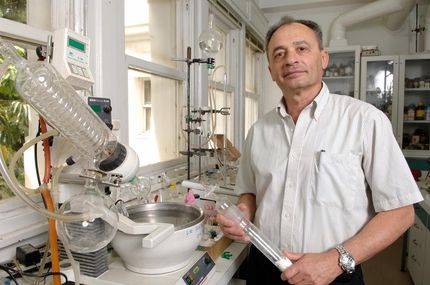Carbon capture has a sparkling future
New research shows that for millions of years carbon dioxide has been stored safely and naturally in underground water in gas fields saturated with the greenhouse gas. The findings bring carbon capture and storage a step closer.
Politicians are committed to cutting levels of atmospheric carbon dioxide to slow climate change. Carbon capture and storage is one approach to cut levels of the gas until cleaner energy sources are developed.
But the risks around the long-term storage of millions of cubic metres of carbon dioxide in depleted gas and oil fields has met with some concern, not least because of the possibility of some of the gas escaping and being released back to the atmosphere. Until now, researchers couldn't be sure how the gas would be securely trapped underground.
Naturally-occurring carbon dioxide can be trapped in two ways. The gas can dissolve in underground water – like bottled sparkling water. It can also react with minerals in rock to form new carbonate minerals, essentially locking away the carbon dioxide underground.
Previous research in this area used computer models to simulate the injection of carbon dioxide into underground reservoirs in gas or oil fields to work out where the gas is likely to be stored. Some models predict that the carbon dioxide would react with rock minerals to form new carbonate minerals, while others suggest that the gas dissolves into the water. Real studies to support either of these predictions have, until now, been missing.
To find out exactly how the carbon dioxide is stored in natural gas fields, an international team of researchers - led by the University of Manchester and funded by the Natural Environment Research Council and the Natural Sciences and Engineering Research Council of Canada - uniquely combined two specialised techniques. They measured the ratios of the stable isotopes of carbon dioxide and noble gases like helium and neon in nine gas fields in North America, China and Europe. These gas fields were naturally filled with carbon dioxide thousands or millions of years ago.
They found that underground water is the major carbon dioxide sink in these gas fields and has been for millions of years.
Dr Stuart Gilfillan, the lead researcher who completed the project at the University of Edinburgh said: "We've turned the old technique of using computer models on its head and looked at natural carbon dioxide gas fields which have trapped carbon dioxide for a very long time."
"By combining two techniques, we've been able to identify exactly where the carbon dioxide is being stored for the first time. We already know that oil and gas have been stored safely in oil and gas fields over millions of years. Our study clearly shows that the carbon dioxide has been stored naturally and safely in underground water in these fields."
Professor Chris Ballentine of the University of Manchester, the project director, said: "The universities of Manchester and Toronto are international leaders in different aspects of gas tracing. By combining our expertise we have been able to invent a new way of looking at carbon dioxide fields. This new approach will also be essential for monitoring and tracing where carbon dioxide captured from coal-fired power stations goes when we inject it underground – this is critical for future safety verification."
Professor Barbara Sherwood Lollar of the University of Toronto and co-author of the study hopes the new data can be fed into future computer models to make modelling underground carbon capture and storage more accurate.
Original publication: Nature 2009
Most read news
Topics
Organizations

Get the analytics and lab tech industry in your inbox
By submitting this form you agree that LUMITOS AG will send you the newsletter(s) selected above by email. Your data will not be passed on to third parties. Your data will be stored and processed in accordance with our data protection regulations. LUMITOS may contact you by email for the purpose of advertising or market and opinion surveys. You can revoke your consent at any time without giving reasons to LUMITOS AG, Ernst-Augustin-Str. 2, 12489 Berlin, Germany or by e-mail at revoke@lumitos.com with effect for the future. In addition, each email contains a link to unsubscribe from the corresponding newsletter.



























































